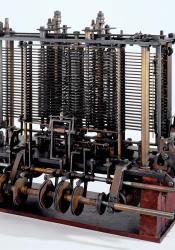Kirkby Hall
This house in the historic village of Kirkby Mallory was built as early as 1666 and was torn down in the latter part of the twentieth century.
Most notably, it belonged to Lady Byron's parents in the nineteenth century and was subsequently the childhood home of Ada Lovelace, the daughter of Lady Byron and her husband, the famed Romantic poet, Lord Byron. Around the time of Lovelace's birth, Lord and Lady Byron's marriage had almost completely dissolved due in large part to his numerous affairs. Additionally, Lovelace was born in the city, but Lord Byron had been expecting a "glorious son" instead of a daughter and was dissapointed and critical of Lovelace's gender; these two facts combined led Lady Byron to leave Lord Byron and head to Kirkby Hall, where Ada Lovelace spent most of her childhood. Soon after, Lord Byron joined a revolution in Greece and died. Hence, Ada Lovelace never knew her father.
The house went through various owners for just over another hundred years before being torn down.
Works cited:
“Kirkby Hall.” Hinckley, Past and Present, www.hinckleypastpresent.org/kirkbyhall.html.
Parent Map
Coordinates
Longitude: -0.636935881921

